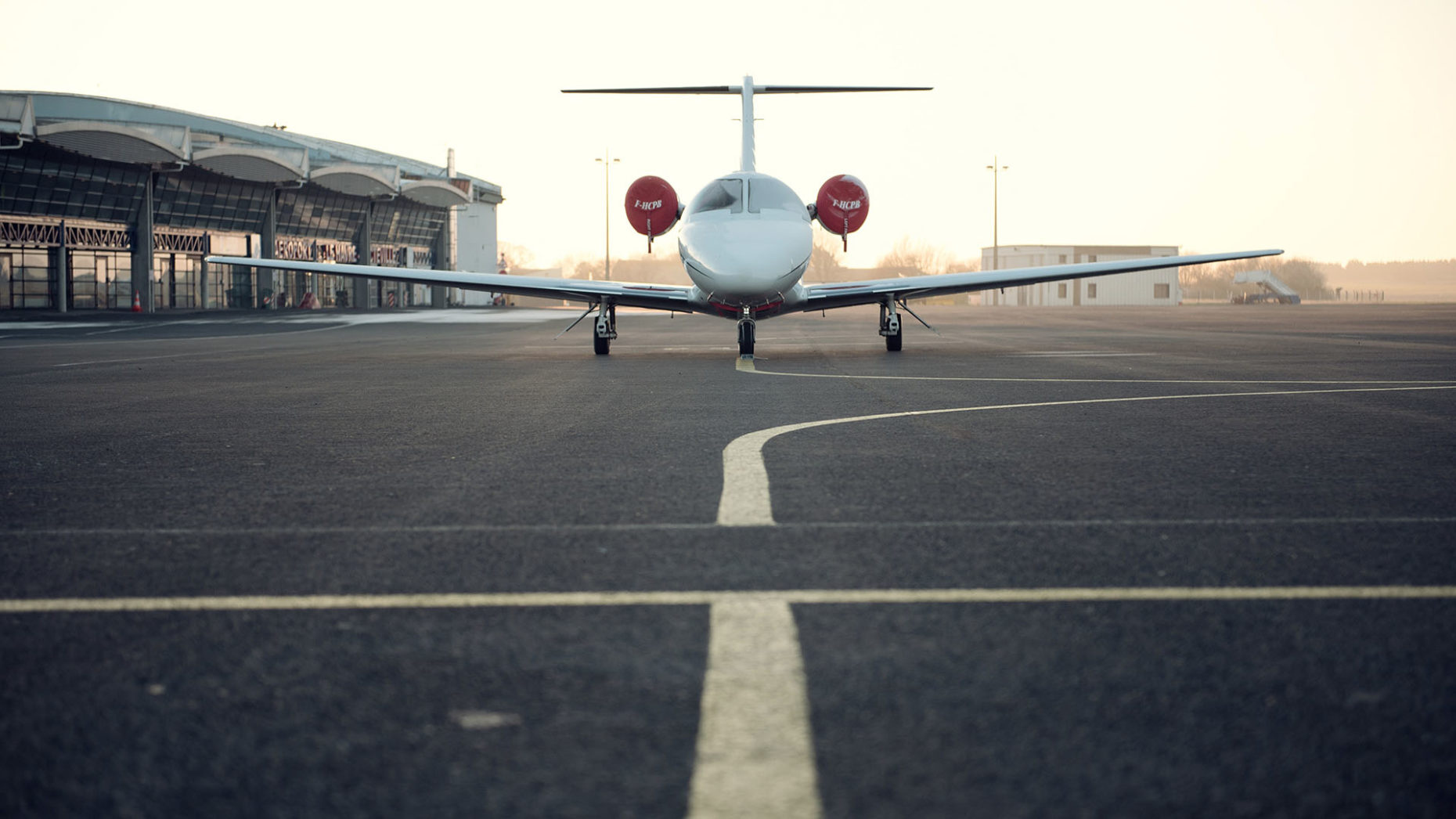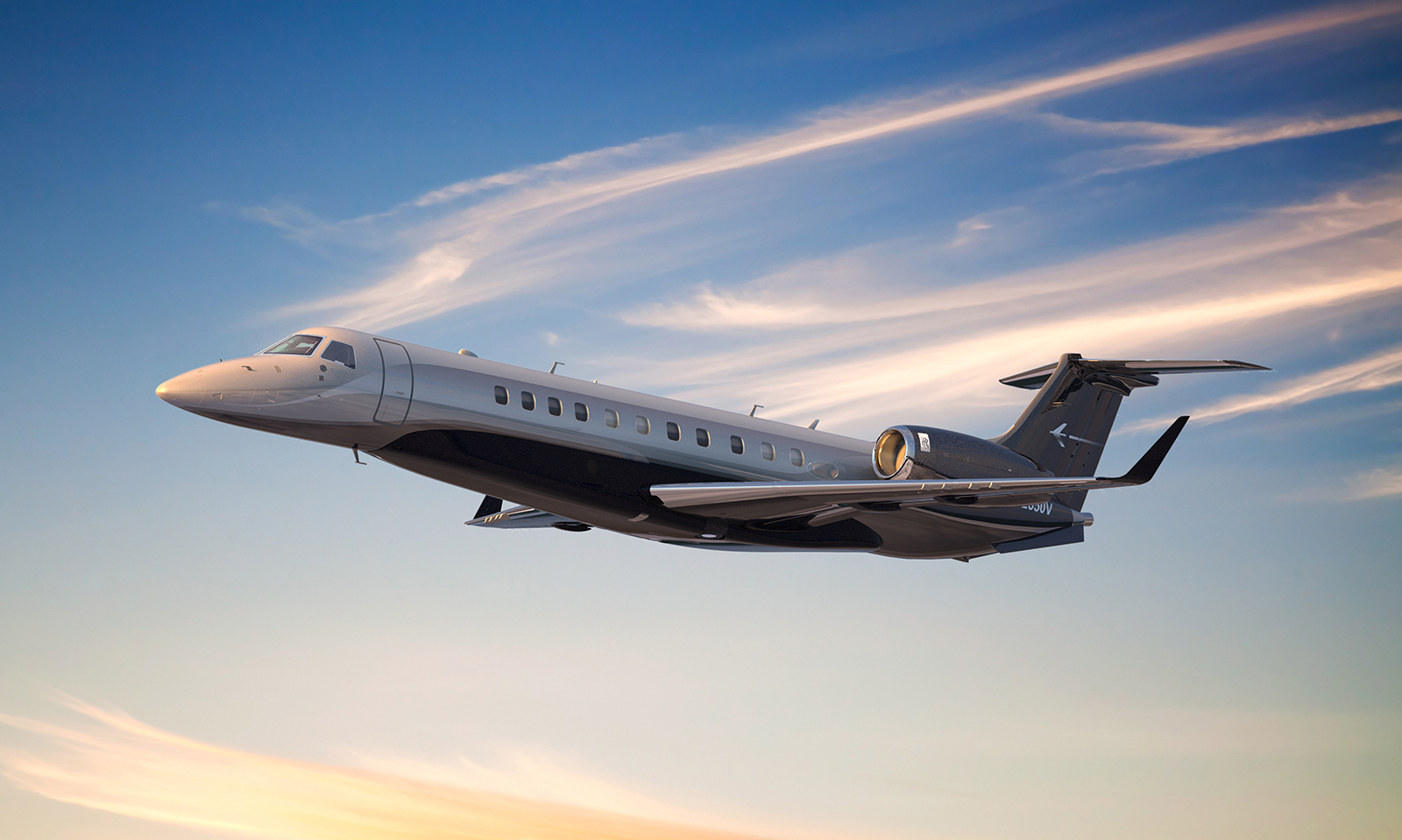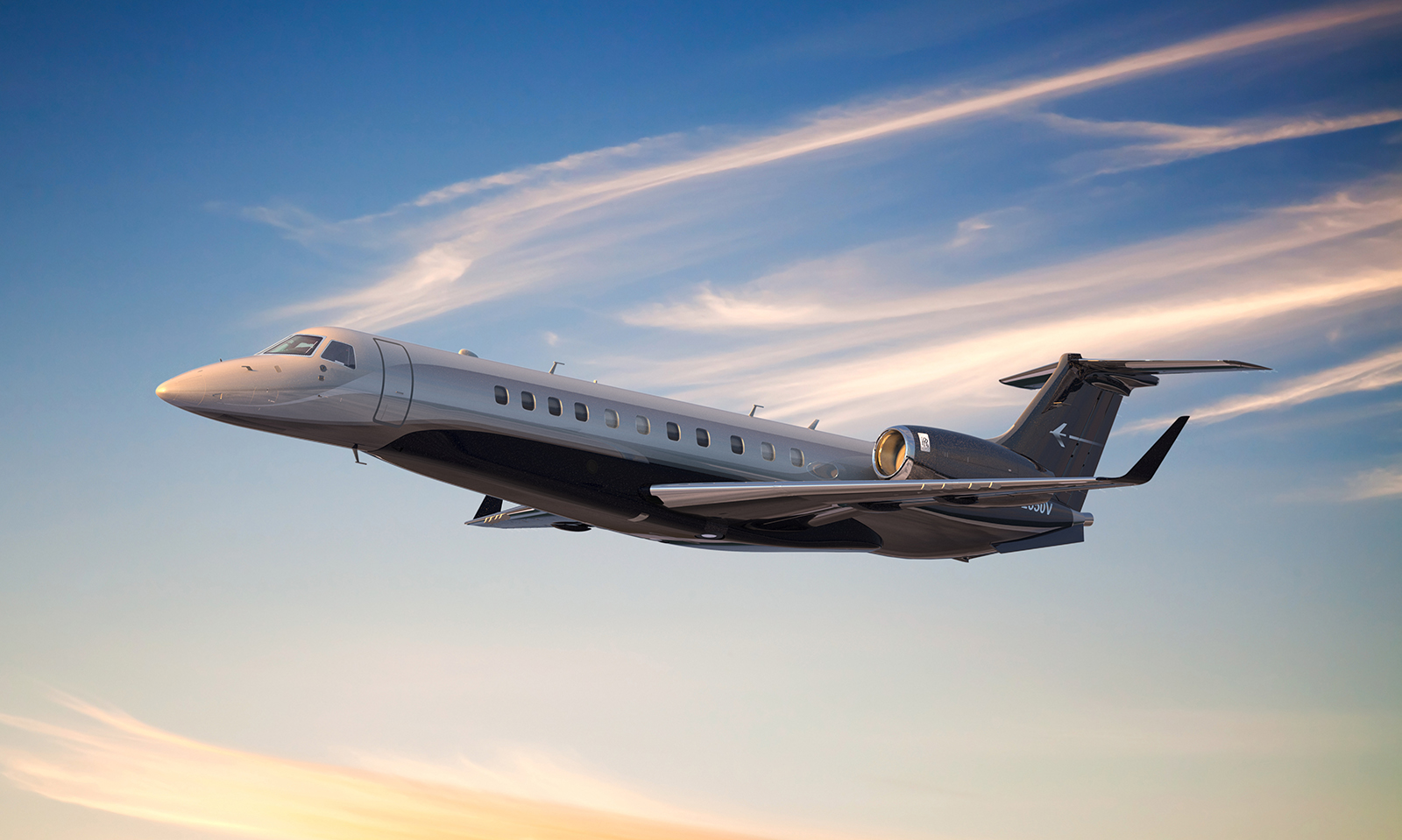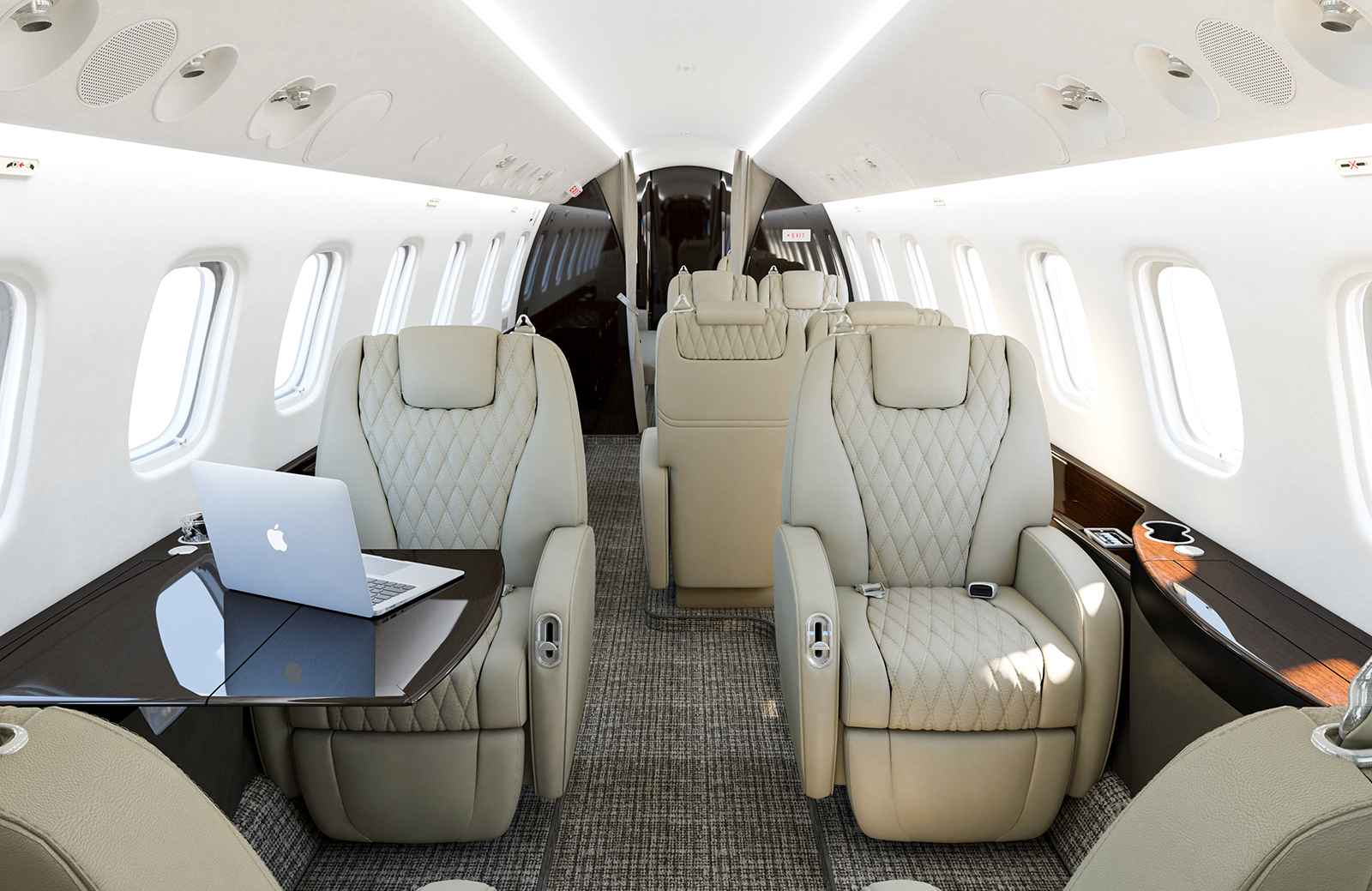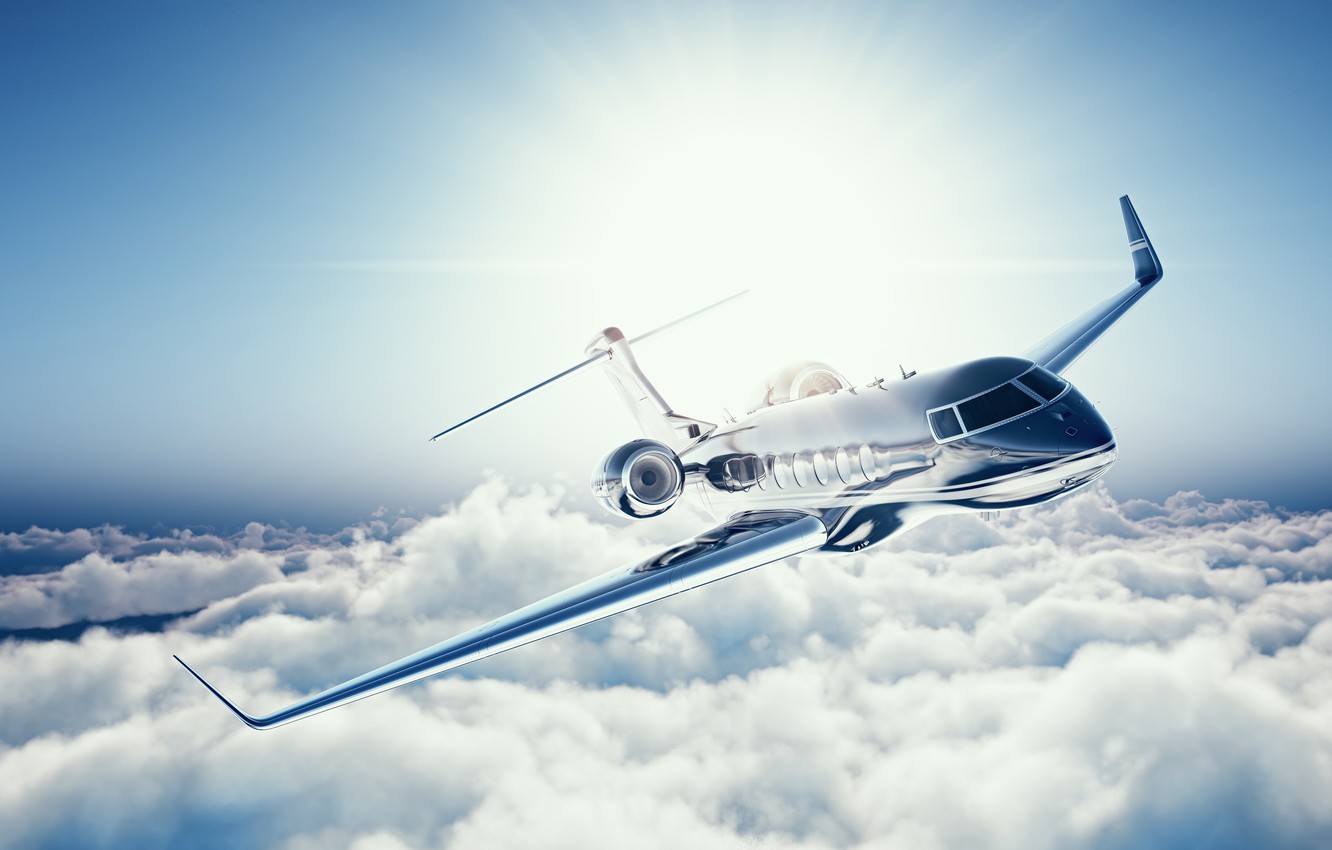[ad_1]
INTRODUCTION:
As I passed the curb-parked convertible and entered the doors of the Eero Saarinen-designed TWA Terminal with its winged, flight-suggesting roof at JFK International Airport on a mid-September day, nothing, I noted, had changed, except that the passenger check-in counters flanking either side were refreshingly devoid of lines. Perhaps that should have been a hint.
Mounting the dozen stairs and then redescending those that led to the familiar Sunken Lounge, I eyed the Solari split-flap arrivals and departures board, its panels periodically flipping and clacking like stacking poker chips, but they only revealed blank squares. There were no flight numbers, no times, and no destinations.
Yet by views of the vintage airliners on the ramp through the floor-to-ceiling angled glass displaying TWA’s red-and-white livery, but lacking a single jet engine, my destination today could only be labeled “history” or, even “aviation history.” Perhaps that was appropriate for the “luggage” I brought: a carry-on consisting of a clipboard and a pen.
The scene before me was a suspended one. The period music and the announcements echoing through my head transported me to the one I was not in.
“TWA Starstream Flight 802 to Paris, now boarding at gate one,” they said.
My eyes, scanning past the location of the once famous and familiar Brass Rail Restaurant toward the dual, main terminal connecting tubes still covered with chili red pepper carpeting to the departure area, I fully expected to take in one or more Boeing 707-320Bs with their bluntly pointed, radome noses, 35-degree swept wings, and Pratt and Whitney JT3D-3B low bypass ratio turbofans.
Yet the Lockheed L-1649A Starliner Constellation, representing the pinnacle-of-piston development, indicated that the era preserved and depicted “out there” was not the one my mind tried to convince me still existed “in here.” Instead, it was two decades earlier, of the 1960s, and I had entered a preserved pocket of time.
THE TWA TERMINAL:
As an expression, representation, and development of the post-World War II-fueled, technology-facilitated commercial airline industry and the then-named Idlewild International Airport whose evolution resulted from it, the TWA Terminal was and is an architecturally aesthetic symbol of it all. It captures the sensation of flight with its wing-resembling shell and the fluid, open interior beneath it.
Unlike many of today’s single-building, multiple-airline facilities, it traces its origin to 1954 when the Port Authority of New York devised its terminal city concept. Anticipating the need for infrastructure to cater to increasing travel demand, it implemented a plan in which each major carrier would design, build, and operate its own terminal, fostering, in the process, brand identity. Although the TWA facility was the architectural response to the Port Authority’s masterplan, its airline-association was one of its intentions from the start, as stated by the project commission, which first sought an efficient ground operations infrastructure, but secondarily wanted “to provide TWA with advertising, publicity, and attention” with it.
That the chosen site for it was at the apex of the airport’s access road, cemented the intention almost as much as the hardened substance which formed it, and that it still does today, despite the two-decade interval since the airline’s demise, serves this post-carrier purpose.
Eero Saarinen, a Finnish-American architect and designer and sometimes considered a mid-century master, was chosen to transform both Idlewild’s and TWA’s vision into concrete reality in 1955. Tracing his own genealogical roots to his father, Eliel Saarinen, an architect, and his mother, Loja Saarinien, a textile artist, he could claim that the talent ran through his veins just as freely as did his blood when he was born in 1910. After studying sculpture in Paris, architecture at Yale University, and design at the Cranbrook Academy of Art in Michigan, he transformed material into aesthetic function in such creations as the St. Louis Gateway Arch and Washington-Dulles International Airport.
Although Eero Saarinen achieved his goal of crafting an abstract representation of flight in the TWA Terminal, its inspiration was never definitely determined, some suggesting that a thumb depression into a hollowed grapefruit rind resulted in the eventual curved, concrete, symmetrically positioned roof sections that seamlessly flowed from the piers that supported them and were only separated by narrow skylights. The four met at a circular pendent center point.
The roof’s wing surface curvature or camber continued in the crimson and white interior by means of the upper walkaway supported columns that merged into both floor and ceiling as if they were integral to them. Its lack of rectangularity was evident in its other features. The stairways, for instance, were curved and its terminal and departure lounge connecting corridors were more like cylindrical tubes.
Its overall expression was one of 1960s neo-futurism and space-age Googie architecture.
Despite what ultimately proved to be Saarinen’s architectural achievement, it also became his legacy, since a year after he inspected its superstructure in 1961, he passed away at 52, never having seen his finished product.
While it was intended to serve small piston airliners whose capacities never exceeded a hundred, it was not suited to TWA’s narrow body jets, such as the 707 and the 727, much less its widebody ones, including the 747, the L-1011 TriStar, and the 767, requiring the addition of jetbridge-connected boarding satellites.
After the carrier’s 2001 demise, its signature terminal awaited purpose or preservation. Its demolition, at least, had already been spared. In 1994, it was designated a New York City landmark, at which time then Chairwoman of the Landmark Preservation Commission, Larie Beckelman, commented in “The New York Times,” “This is perhaps the quintessential modern form, expressing movement and the whole concept of flight.”
Eleven years later it was placed on the National Register of Historic Places. With its presence at least assured, it still awaited the two “p’s”-preservation and purpose.
THE TWA HOTEL:
Preservation and purpose, in the event, became two sides to the same coin-that is, restore the 392,000-square-foot terminal to recreate its 1960’s splendor and serve as the anchor and lobby to another two sides-in this case, two rectangular, black glass buildings with 512 hotel rooms developed by MCR/MORSE and four architectural firms at a $250 million-plus cost.
Architect Richard Southwick, who oversaw the project’s restoration, noted of the TWA Flight Center, “(It was) the perfect symbol of post-war optimism, the magic of flight, and the elegance of mid-century modern architecture.”
Its first guests were accepted in May of 2019.
As a “lobby,” it contains the Sunken Lounge with the Solari flight board; a cocktail lounge; a Sundries Shop with vintage copies of “Life,” “Time,” “Good Housekeeping,” and “Family Circle” magazines; an old-fashioned shoe shine station tucked in the corner (of course); a TWA Gift Shop whose every item, one way or the other, displays the airline’s logo; a 10,000-square-foot fitness center with a cycling studio, treadmills, ellipticals, a spa section, and personal trainers; and the Paris Café by Jean-Georges, which occupies the footprint of the original one, along with that of the Lisbon Lounge, on one of the two mezzanines and serves cuisine inspired by TWA in-flight menus. There is also 50,000 square feet of meeting and event space.
The two cylindrical tubes-the “Saarinen” to the left and the “Hughes” to the right-lead, by way of midway, originally nonexistent cutouts, to the two seven-story glass, metal, and concrete hotel structures, which were required to be complimentary to, but distinguishable from, the landmark terminal.
Seven layers of triple-glazed, 1,740-pound, insulated, floor-to-ceiling glass ensure in-room silence, despite the fact that ramp-taxiing aircraft are only yards away.
Rooms, which either overlook this scene or the terminal, rent for $250 per night, with lower priced intervals bookable for transit passengers who only seek a short sleep and a shower.
The roof features the Infinity Edge Pool and observation deck, along with a bar.
Only the “Saarinen” tube, back on the main level, leads out-or, in the reverse direction, in-to this preserved pocket of time, as expressed by the two floor designations-or eras-on which the elevator at its end alights: “1960s TWA Hotel” and “Present Day JetBlue,” according to the two buttons the passenger can press to travel there.
THE MUSEUM DISPLAYS:
While the Eero Saarinen designed terminal can be considered a collective, retro, but still-living arena, several areas serve to accentuate it in museum form.
“Located in various spots throughout the former TWA Terminal-the heart of our hotel-as well as in the event center and in the areas that connect our hotel flight tubes to JetBlue’s Terminal 5, the exhibits (curated by the New York Historical Society) allow visitors to experience the jet age through authentic artifacts, interactive displays, and personal narratives,” according to the TWA Hotel website.
Its 2,000 items hail from the TWA Museum in Kansas City, as well as from the former airline employees who donated them.
“Exhibitions focus on TWA’s history, including Howard Hughes tenure as owner, TWA uniforms from 1945 to 2001, and Saarinen’s development of the terminal at Idlewild Airport,” the website continues.
Stressing the latter’s importance, Mike Thornton, New York Historical Society curator, stated, “The Saarinen terminal is a monument to the optimism and vision of the jet age. These exhibitions invite people into the glamor and fun that Saarinen and TWA worked so hard to create and foster.”
A desk, old fashioned typewriter, and system timetable set-up next to the elevator, for instance, recreates a TWA corporate office, while wall displays tell the carrier’s story, along with its Howard Hughes influence and its historic aircraft.
Black-and-white photographs gracing the walls opposite the hotel check-in counter depict TWA’s early “airline of the stars” image, with the likes of Jimmy Durante, Marilyn Monroe, Lucille Ball, Elizabeth Taylor, Bob Hope, Frank Sinatra, the Beatles, and Mary Tyler Moore boarding aircraft as diverse as the Ford Trimotor and the Boeing 707.
A TWA flight crew uniform and luggage exhibit is located on the second of the two mezzanines.
“The glamor of air travel in the jet age catapulted TWA pilots to star statuses, many of them celebrated as much for their dashing good looks as their ability to navigate a transatlantic flight,” according to the exhibit. “Pilot uniforms with gold epaulets, pins, and jaunty hats burnished their admired role as those who could fly through the clouds on the new jets of the 1960s.”
The evolution of flight attendant uniforms, displayed on mannequin bodies, depict the five designers who created them: Don Loper (1960-1965), Dalton of America (1968-1971), Valentino (1971-1975), Stan Herman (1975-1978), and Ralph Lauren (1978-2001).
THE LOCKHEED CONSTELLATION:
Jotting notes in the Sunken Lounge as I awaited my flight, I realized that even here I was immersed in Saarinen’s world, bodily cradled by womb chairs at tulip tables, both of which he designed.
The board continued to click and clack, sometimes displaying departures by carriers such as Pan Am. Even it had taken off for a final time, deposited in that dimension known as “history.”
Ground attendants-I guess the in-flight “stewardess” counterpart was an acceptable, albeit sexist, title in those days-took drink orders.
Subliminally, subconsciously, and emotionally, I suddenly knew that it was time to board my flight. No one called it. History did-the lure and love of aviation history, that is. Responding, I rose from my Sunken Lounge seat, filing down the corridor past the library-cum-bookstore Reading Room, and finally opened the door to the tarmac. There were no lines. No one stopped me. No one asked me for a boarding pass. Flights destined for yesteryear apparently did not require them. What has already played out in time was free and available to anyone who wished to recreate or relive it.
Walking over the lines painted to represent mock Runway 04-Right/22-Left, I approached the airliner, poised on the ramp in its 1960’s glory. If I could have stood on a ladder, I could have faced it, nose-to-nose. As a six-decade technological interval, its propellers did nothing to detract it from its sleek design profile.
From the long, angled, aft-retracting nose gear strut, which touched the tarmac with its dual, equally angled tires to save rubber during tight ground turns, my eyes moved up to the black nose cone and the seven-pane cockpit windscreen. The fuselage, emulating an airfoil, gently sloped upward behind the cockpit and downward again at the rear, just before the triple vertical stabilizers, an engineering solution to low-ceilinged hangars. The straight, but tapered wings, mounted at a seven-degree dihedral and lined with deicing boots on their leading edges, sported four, three-bladed propeller, Wright Turbo-Compound engines. The aircraft, registered N8083H “Star of America,” had returned “home” and in many ways was Trans World Airlines.
Eagerly anticipating its refurbished cabin, I climbed the boarding steps, which proclaimed, “Up, up and away with TWA,” and stepped inside. “Away” I would.
THE EARLY CONSTELLATION VERSIONS:
Like the Eero Saarinen designed terminal, the Lockheed Constellation was a product of the same force-ever-increasing post-war demand, except the airliners, embodying advancing technology, also needed to remain competitive with other carriers that operated rival designs.
TWA, however, had an additional urgency for a modern fleet replacement. Compared to United’s northern and American’s southern route coverages, its mid-continent one placed it at a disadvantage.
What was needed (by all three airlines) was a larger capacity, longer-range, more comfortable counterpart to, if not replacement for, the ubiquitous twin-engine DC-3 on one-stop transcontinental routes.
“Howard (Hughes) had the idea he could steel a lot of the Hollywood crowd’s business away from the other fellows, if we had a super-deluxe airliner that could fly nonstop L.A. to New York, or even one-stop via Chicago,” according to Jack Frye, TWA’s Vice President of Operations in Douglas J. Ingells’ book, “L-1011 TriStar and the Lockheed Story” (Arco Publishers, 1973, p. 73). “He was talking eight or nine hours flying time, coast-to-coast, about post-posh interiors with a club car atmosphere in a day plane, and Pullman-style berths for night trips. It all sounded far out, but Hughes was dead serious.”
Three quad-engine, new-generation airliners were proposed by the three competing aircraft manufacturers at this time: the DC-4E from Douglas, the B-307 Stratoliner from Boeing, and the L-44 Excalibur from Lockheed, which, in April of 1939, served as the Constellation’s early foundation, featuring a triple vertical tail, a 36-passenger complement in a pressurized cabin, a 1,200-US gallon fuel capacity, and a 40,000-pound gross eight.
As a larger development of the Excalibur, the L-49, which would prove the first in a series of more ambitious versions, was powered by four 2,200-hp Wright Duplex Cyclone engines, and could carry a 6,000-pound payload at between 250 and 300 mph at a 20,000-foot cruising altitude. Its still-air range was 3,500 miles. Most unique to the design, however, was its fuselage.
“… The Constellation’s fuselage, of circular cross section throughout its length, featured a cambered centerline to give it an airfoil profile in side view,” according to M. J. Hardy in his book, “The Lockheed Constellation” (Arco Publishing Company, 1973, pp. 12-14). “This served both to increase the maximum width of level floor, especially in the nose and tail sections, and to shorten the nose wheel leg by drooping the front fuselage… “
After reviewing the design’s specifications and making corrections of his own, Hughes ordered the type-initially nine, but subsequently 40. Since TWA itself could not afford the expenditure, he had no choice but to pay for the aircraft himself. “Send the bill to the Hughes Tool Company,” he instructed.
First flying in prototype form on January 9, 1943, it demonstrated that all of its design goals had either been achieved or exceeded. Maximum (not cruise) speed was 347 mph and gross weight was incrementally increased from an initial 68,000- to a final 86,250-pound maximum.
Its intended commercial application, however, was placed on hold. The December 7, 1941 Pearl Harbor attack, opening war in the Pacific theatre, relegated the luxurious airliners to a troop and supply transport, and those L-49s rolling off the production line and modified for wartime service, were redesignated C-69s and were delivered to the US Army Air Force instead. On one such flight, an aircraft in TWA colors and piloted by Hughes during the first half of its transcontinental sector and by Frye on the second half of it, covered the 2,400-mile Burbank-Washington distance on April 17, 1944 in record time, clearly demonstrating the design’s potential.
“We did not deliberately set out to establish a new transcontinental record,” Frye later stated. “The trip was made in six hours, 58 minutes simply because the Constellation was designed and built to fly at such remarkable speeds.”
The first production Constellation, now designated L-049 to distinguish it from the original, pre-war variants, was certified by the Civil Aeronautics Board on December 11, 1945, and TWA inaugurated the type into transatlantic service between New York and Paris-Orly three months later, on February 5. Powered by R-3350 engines with three-bladed, 15.2-foot-diameter, reversible pitch, fully feathering propellers, the appropriately named “Star of Paris” carried 35 passengers to the City of Light via Gander and Shannon.
Ten days later it placed the type on the transcontinental route between New York and Los Angeles, completing the eastbound leg in 9.45 hours and the westbound one in 11. In comparison to American’s and United’s slower, unpressurized, two-stop DC-4s, the Constellation offered a distinct competitive advantage.
Lockheed’s “Of Men and Stars” history noted, “In the five months that followed introduction of the Model 049 to commercial airline service in February 1946, the majestic triple-tail transports set new standards of speed, comfort, and safety. They made 300-mph schedules a reality (and) ocean-to-ocean nonstop flights commonplace.”
While the type’s 92.5-foot length and 123-foot wingspan initially remained the same, two subversions introduced increased range and improved performance.
The L-749 intended for intercontinental services, carried 565 additional US gallons of fuel, for a new 5,820-gallon total, increasing its range by some 1,000 miles. Maximum take off and landing weights were respectively increased to 102,000 and 87,500 pounds.
Both versions introduced new propellers, flap deflection increases, and improved cabin heating, cooling, and ventilation systems.
A significant Constellation operator, TWA counted 12 L-749s and 25 modified L-749As in its fleet, over and above its original L-049s, enabling it to serve transatlantic routes to London, Paris, Rome, and then-named Bombay.
Accommodation varied according to market. Its “London Ambassador” service, for example, which was inaugurated on April 8, 1951, was configured with 18 berths. “Sleeper Flights” carried 32. Five-abreast, all-coach transatlantic services seated 60 and US domestic ones 81.
TWA retired its last L-049 at the end of 1961.
THE SUPER CONSTELLATION:
Technical advancements, along with increased speed, safety, and comfort introduced in the five years since the end of World War II, created unprecedented demand for both domestic and international air service, toward which Lockheed, with its three basic L-049, L-649, and L-749 variants made a significant contribution. Although subsequent updates, designated L-749B and L-849, would have offered even greater performance with, respectively, uprated piston and Napier Eland turboprop powerplants, passenger demand indicated the need for greater capacity instead, achieved through stretches of the existing fuselage. Because flight tests with L-749s demonstrated that its gross weight capability could be as high as 137,000 pounds with its original wing, no major design modifications were required.
Based upon studies for an earlier, 100-passenger, but never built L-949, the first and, in the event, only stretched version, the L-1049A Super Constellation, incorporated a new wind screen, an 18.5-foot fuselage insertion for a new 113.4-foot overall length, rectangular passenger windows that replaced the previous oval ones, and provision for 730 additional gallons of fuel in a new center section tank.
Powered by four 2,700-hp R-3350-956C18 CA-1 engines, it incorporated a larger fin to counteract the additional weight, a 728-cubic-foot underfloor baggage and cargo volume, an improved pressurization system to create a 5,000-foot altitude at 20,000 feet, a 6,550-US gallon fuel capacity, and a 120,000-pound maximum weight.
Certification, although initially only at a 100,000-pound gross weight, took place on November 29, 1951 and TWA, which ordered ten of the 24 L-1049As produced (Eastern operated the remaining 14) inaugurated them into service on September 10 of the following year.
“Model 1049 emerged as a stretched version of the original Army Air Corps cargo transports,” according to Ingells (op. cit., pp 80-82). “In its original form, Connie was designed to carry 65 passengers. Model 1049 could carry 99.”
“Connie was a lady, who simply had to keep up with the latest styles,” he went on to say (p. 83).
The new version enabled TWA to inaugurate transcontinental Ambassador Service on October 19, 1953, which retained the Chicago intermediate stop on westbound legs, but omitted it on eastbound ones. These were completed in under eight hours. Despite the competitive promise it carried when pitted against American’s DC-6Bs, it only lasted six weeks. Thereafter, its DC-7s could cover the distance nonstop in both directions.
The Super Constellation series culminated with two other versions. Power equaled payload and performance and the introduction of 3,250-hp Wright Turbo-Compound R-3350-972TC18 DA-3s, along with the optional installation of two 600-US gallon tip tanks, provisioned it with a 7,750-US gallon total, giving it a 4,620-mile range with reserves. Ninety-nine single-class passengers could be comfortably accommodated in the 92-foot-long, highly sound-proofed cabin. Northwest Orient, launch customer for the resultant L-1049G, took delivery of the type on January 22, 1955.
TWA placed orders for 12 and then eight L-1049Gs in October of 1953 and November of 1955. Its aircraft featured weather radar, the two wing tip fuel tanks, 700 pounds of cabin insulation, and two-compartment General Electric air circulation ovens that could simultaneously heat 60 pre-cooked meals.
THE STARLINER:
If any aircraft, and any version of that aircraft, were symbolic of Trans World Airlines, it was the Lockheed L-1649A Starliner. It seemed to make that statement today.
Necessity, as always, provided the direction and pointed to the destination, the latter being the long-range ones airlines had to cover without wind, seasonality, and payload restrictions, and Douglas, soon to introduce the intercontinental version of its DC-7C “Seven Seas” with its ten-foot greater wingspan, injected Lockheed with new impetus if it wished to remain competitive. Although the resultant L-1649A was a technical success, the year required for its considerable redesign alas placed it on the market too late for anything but paltry sales.
A modified wing, key to its improved capability, served as a foundation laid earlier for an L-1449 to have been powered by turboprops from either the US or UK, but which, in the event, had neither been proven suitable nor certifiable. Nevertheless, it incorporated 37-foot-long, integrally stiffened skin panels, full-depth tank end ribs for a new four-tank fuel system, closely spaced ribs, and a revised trailing edge and Fowler flaps.
While work on this version ceased in early-1955, engineering resources were reassigned to what would become the definitive, longest range version, the L-1649, which was later designated L-1649A Starliner. Overall length remained the same as that of the Super Constellation series, but a tapered, 150-foot, thinner wing of higher aspect ratio was mounted further back on the fuselage and four 3,400-hp Wright R-3350-988TC18 EA-1 Turbo-Compound engines were installed further outboard, reducing cabin decibel levels. The larger-diameter, synchronized, low tip-speed Hamilton Standard propellers, coupled with 900 pounds of additional cabin insulation, cemented its quiet interior.
Its maximum take off weight was 156,000 pounds.
The first of two flying prototypes in its three-aircraft test program took to the air from Burbank on October 11, 1956 and TWA took delivery of the first of 25 L-1649As the following April.
Configured for 30 first and 34 coach seats, along with an eight-berth first class sleeping compartment, it operated “Nonstop Ambassador” service from New York to Los Angeles and San Francisco, later introducing the concept from Boston and Washington. Its transatlantic service, “The Jetstream,” served London with 74-passenger coach cabins as of July 1, 1957 and was subsequently extended to Paris, Frankfurt, and Rome. Transpolar flights, from Los Angeles to London with an intermediate stop in San Francisco, commenced October 2. The following year, in March, the London-San Francisco sector was covered in 19 hours, 5 minutes, which beat its previous record. All-coach “Golden Barron” transcontinental services were also operated with the type.
Compared to the initial C-69 military transport, the L-1649A Starliner had weight, power, and capacity increase of, respectively, 44.5, 47, and 72 percent.
“Rugged, reliable, easily flyable, distinctly styled, and naturally graceful” is how TWA Captain Dave Richwine described the aircraft (Morgan, op. cit., pp 8-9). “The Lockheed Constellation has been a star performer… and is most certainly a candidate for one of the all-time great commercial transports… Conceived in love for aviation and in hope of enhancing the future of commercial air transportation, she was born in the last World War II years, first serving her country as a military air transport. Following her strenuous baptism as a 93,000-pound fledgling that started life sans steerable nosewheel and reversible props, she took her place in the commercial air transport industry. Since then, she has probably undergone more developmental stages than any other commercial air transport in history to finally emerge supreme as a member of the piston royalty in the form of a 160,000-pound 1649A Jetstream.”
A total of 856 military and commercial Constellations, which only featured two fuselage lengths and two wingspans, of all versions was built. Before TWA operated the last one, albeit in freighter form, on May 11, 1967-replaced by Boeing 707-120s-its Constellation fleet had transported an estimated 50 million passengers between 1946 and 1967, and during 1959, the type’s peak, it counted 32 L-049s, 12 L-749s, 27 L-749As, 9 L-1049As, 28 L-1049Gs, and 29 L-1649As in its inventory. I was in one of the latter ones today.
“STAR OF AMERICA:”
The Constellation that stood ready to accept passengers at the restored TWA Terminal on that mid-September day, N8083H, had rolled off of Lockheed’s Burbank production line in 1958, flying under the carrier’s colors, first as a passenger airliner, then as a freighter, for only four years.
As I entered the cabin, I thought of M. J. Hardy’s words. “An outstanding example of piston-engine airliner design at its peak, the Constellation well befits the dictionary definition of its name as ‘a group of fixed stars, or an assemblage of splendors or excellences,'” he said (Hardy, op. cit., p. 7).
While “Star of America” was configured as a cocktail lounge, there was enough of its design as an airliner left to inspect.
A view into the metallic green cockpit, in which the JFK tower frequency issued an unceasing barrage of instructions to active flights, provided a glimpse into what the pilots viewed-from the sky through the three forward and four side window panes to the half-moon yokes, engine indications on the center panel, the four throttles on the pedestal, and the flight engineer’s station, on whose table was laid both a normal and an emergency checklist. Aside from his own panel that sported a myriad of indicators, there were also throttles, engine superchargers, mixture controls, and fuel shut-off valves.
Behind and to the left of the cockpit was the separate navigator’s station, whose crew member determined the aircraft’s location by taking star fixes through the roof-installed astrodome.
The cabin-converted cocktail lounge was configured with both burnished gold upholstered banquets and traditional four-abreast seats with TWA headrest covers, and the carpeting was airline indicative bright red.
Since no boarding pass indicated the one assigned to me, I chose a window one on the port side, settling into the 1960’s dimension and studying the upper wing surface and the two projecting piston engines. Propellers they certainly sported!
A Royal Ambassador menu detailed what might have been served if I had been in flight at that time: hors d’oeuvres of American caviar and an assortment of delicacies from the cart; cream of asparagus soup; a garden salad with bleu cheese or French vinaigrette dressings; entrees such as chateaubriand, chicken champagne, lamb rib roast, and lobster thermidor; a cheese board with a selection of fresh fruit; cassata siciliana; and after-dinner coffees. Vintage wines, of course, flowed throughout the repast.
The Constellation’s cocktail menu today indicated purchasable items, such as “Cocktails 316,” spirits, wine and champagne, beer, nonalcoholic beverages, and snacks like a charcuterie, marinated olives, hummus, and a cheese board.
A cutout provided a view of the aircraft’s framework-that is, the outer skin and longerons of its fuselage.
Paris and Hollywood mural replicas adorning the aft sidewalls represented those eight-by-four-foot ones designed by Mario Zamparelli that depicted 25 TWA-served destinations from Boston to Bangkok in the Starlight Lounges of its Constellations.
As I deplaned through the aft, left door and descended its boarding stairs, I thought of Douglas J. Ingells’ concluding words about the airliner.
“Her sleek lines, the shark-like profile of her fuselage, her distinctive triple tail, and the many advanced features she pioneered, left a high heritage in the annals of commercial aviation. She had class, grace, and beauty. And of all the so-called ‘Sky Queens,’ her reign will never be forgotten,” (Ingells, op. cit., p. 83).
THE JOURNEY:
I spent some three hours immersed in the Eero Saarinen created era, and it took far less time than that to walk down the Constellation’s aisle, from its forward to its rear door. Yet as my feet once again made contact with the ground-and, perhaps, the 21st century-I realized that I had just completed a six-decade journey into history, not of motion, but of mind.
Bibliography
Hardy, M. J. “The Lockheed Constellation.” New York: Arco Publishing Company, 1973.
Ingells, Douglas J. “L-1011- TriStar and the Lockheed Story.” Fallbrook, California: Aero Publishers, Inc., 1973.
Morgan, Terry. “The Lockheed Constellation.” New York: Arco Publishing Company, 1967.
[ad_2]
Source by Robert Waldvogel


